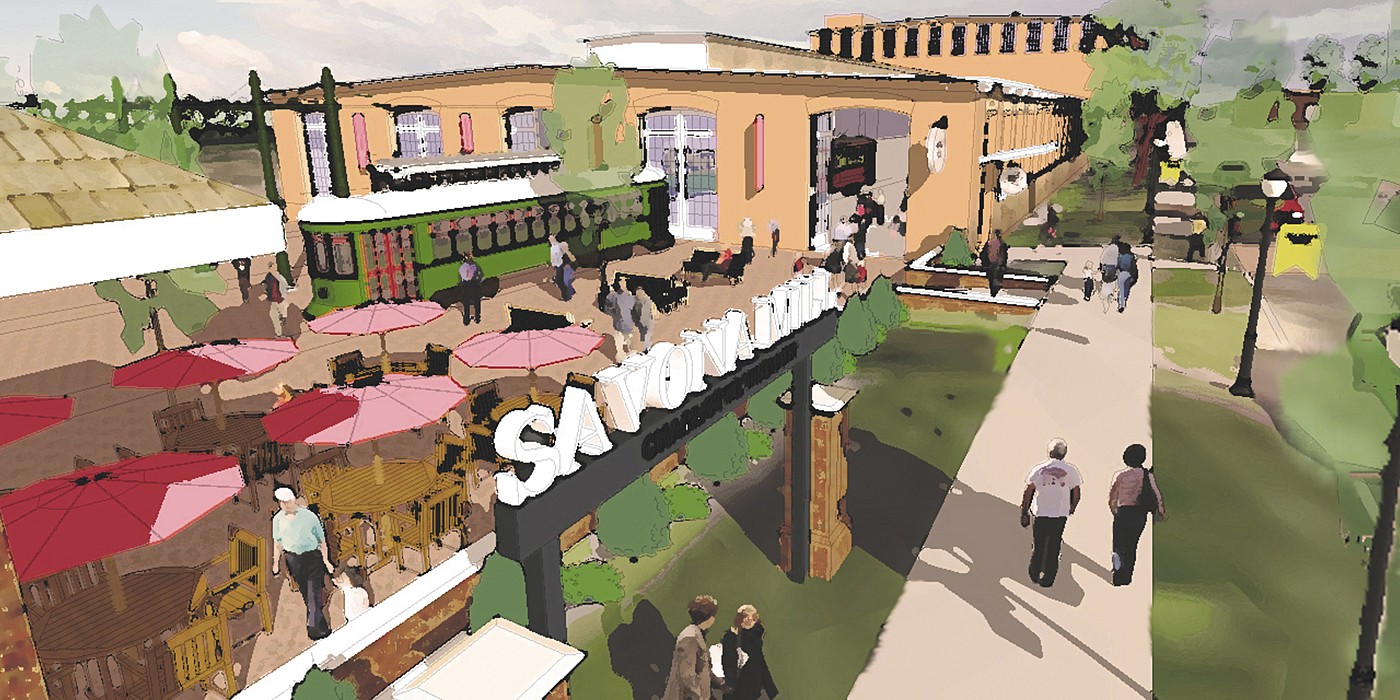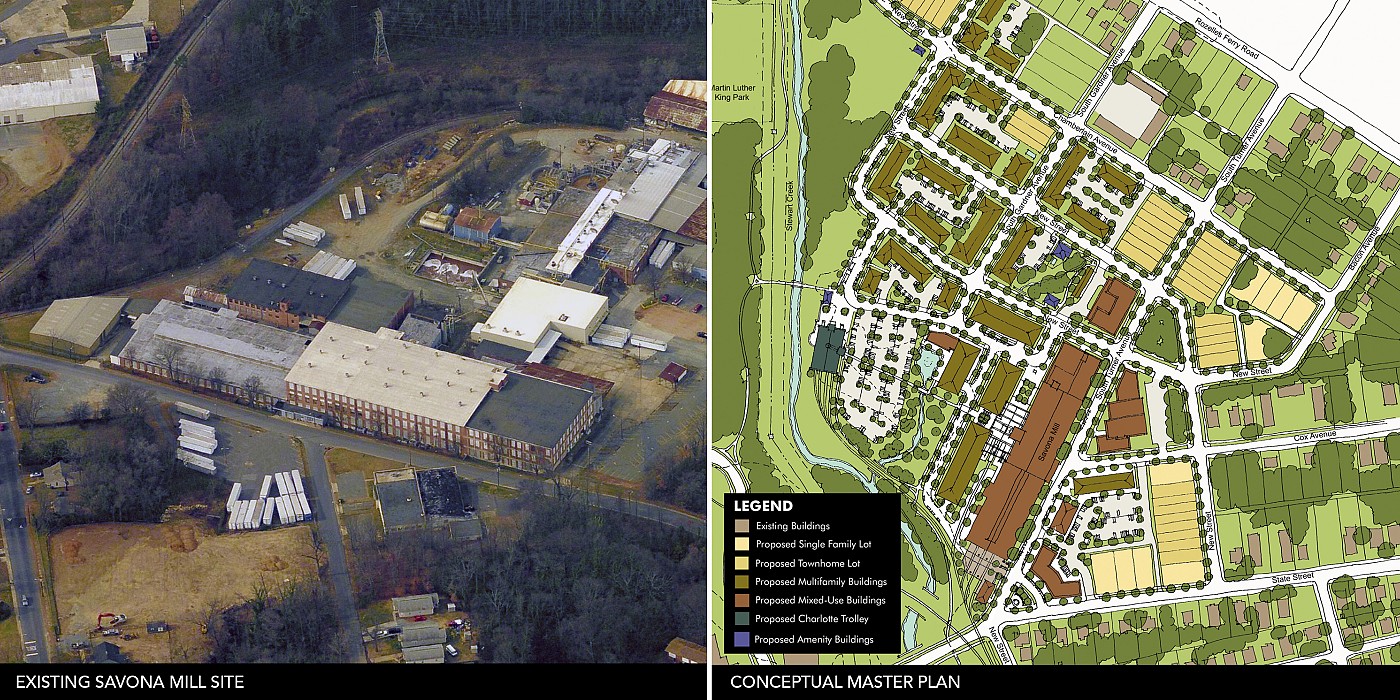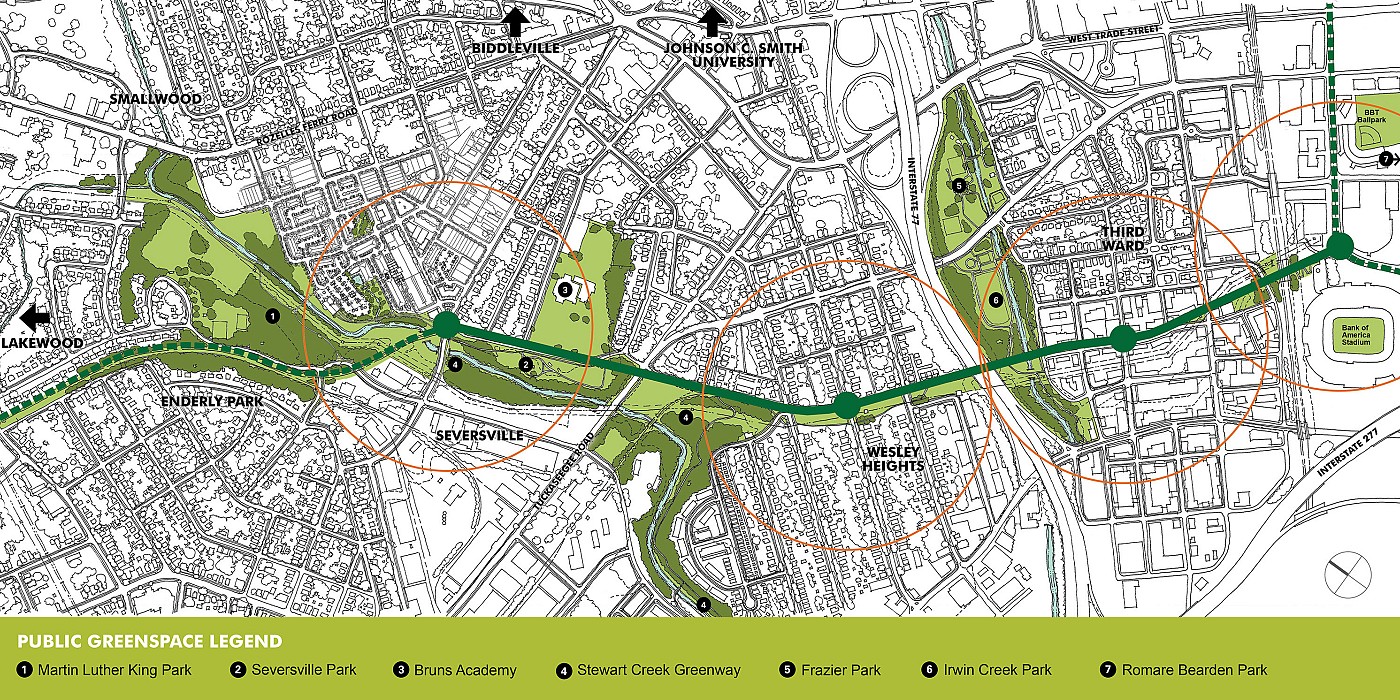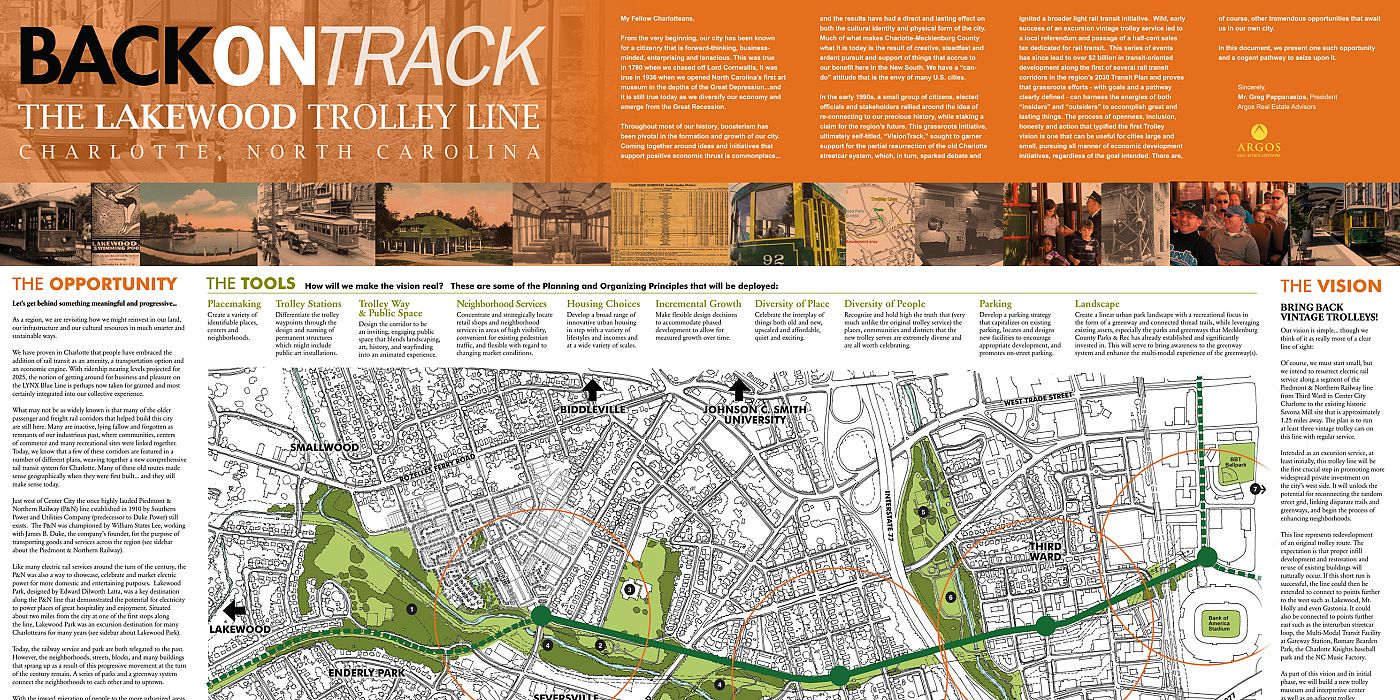- You have not saved any projects.
Savona Mill
With Argos Real Estate Advisors, Shook Kelley is master planning and developing the vision for the area surrounding the historic Savona Mill in west Charlotte, for the intent to not only re-purpose this historical manufacturing building into a new mix of residential, office and retail uses, but also to serve as catalyst for the interest of restoring vintage trolley service in the city—again.




Charlotte's trolley cars, restored and put back into service in the 1990s, were parked in 2010 by the Charlotte Area Transit Authority (CATS) following the startup and unprecedented success of the LYNX Blue Line (light rail service that shared the same rail lines running through Center City Charlotte and Historic South End as the Trolley.)
Charlotte has embraced the addition of rail transit as an amenity, a transportation option and an economic engine. With ridership already nearing levels projected for 2025, the notion of getting around for business and pleasure on the LYNX Blue Line is perhaps now taken for granted and most certainly integrated into our collective experience.
What may not be as widely known is that many of the older passenger and freight rail corridors that helped build this city are still here. Many are inactive, lying fallow, forgotten as remnants of our industrious past, where communities, centers of commerce and many recreational sites were linked together. Today, a few of these corridors are featured in a number of different plans, weaving together a new comprehensive rail transit system for Charlotte. These old routes made sense geographically when first built, and still do today.
Just west of Center City, the once highly lauded Piedmont & Northern Railway (P&N) line established in 1910 still exists. The P&N was championed for the purpose of transporting goods and services across the region. Like many electric rail services around the turn of the century, the P&N was also a way to showcase, celebrate and market electric power for more domestic and entertaining purposes. Lakewood Park, designed by Edward Dilworth Latta, was a key destination along the P&N line that demonstrated the potential for electricity to power places of great hospitality and enjoyment. Situated about two miles from the city at one of the first stops along the line, Lakewood Park was an excursion destination for many Charlotteans for many years.
The Savona Manufacturing Company built its new factory around this same time–The Savona Mill–along with around 50 new houses for the workers in west Charlotte in 1920. The mill workers spun, bleached and finished cotton yarns into various woven products. The existing structure has been identified as eligible for the National Register of Historic Places. Today, it too sits empty, vacated in recent years by a national packaging materials company.
Today, the railway service and park are both relegated to the past. However, the neighborhoods, streets, blocks, and many buildings that sprang up as a result of this progressive movement at the turn of the century, including the Savona Mill, remain. A series of parks and greenway system connect the neighborhoods to each other and to uptown. The opportunity exists to reinvest in the P&N Railway corridor as a way to knit back together several neighborhoods, reconnecting us to our past and becoming a model for place-sensitive, sustainable and progressive development.
Just as the VisionOnTrack initiative by Shook Kelley did in the early 1990s, the time has come to get BackOnTrack by crafting a new, forward-looking vision for a part of Charlotte rich with heritage and new possibilities. By leveraging the same kinds of processes and partnerships the New South predecessors did to enact positive change, we too can demonstrate how citizens can rally around an idea to make meaningful and progressive changes occur.
Charlotte's trolley cars, restored and put back into service in the 1990s, were parked in 2010 by the Charlotte Area Transit Authority (CATS) following the startup and unprecedented success of the LYNX Blue Line (light rail service that shared the same rail lines running through Center City Charlotte and Historic South End as the Trolley.)
Charlotte has embraced the addition of rail transit as an amenity, a transportation option and an economic engine. With ridership already nearing levels projected for 2025, the notion of getting around for business and pleasure on the LYNX Blue Line is perhaps now taken for granted and most certainly integrated into our collective experience.
What may not be as widely known is that many of the older passenger and freight rail corridors that helped build this city are still here. Many are inactive, lying fallow, forgotten as remnants of our industrious past, where communities, centers of commerce and many recreational sites were linked together. Today, a few of these corridors are featured in a number of different plans, weaving together a new comprehensive rail transit system for Charlotte. These old routes made sense geographically when first built, and still do today.
Just west of Center City, the once highly lauded Piedmont & Northern Railway (P&N) line established in 1910 still exists. The P&N was championed for the purpose of transporting goods and services across the region. Like many electric rail services around the turn of the century, the P&N was also a way to showcase, celebrate and market electric power for more domestic and entertaining purposes. Lakewood Park, designed by Edward Dilworth Latta, was a key destination along the P&N line that demonstrated the potential for electricity to power places of great hospitality and enjoyment. Situated about two miles from the city at one of the first stops along the line, Lakewood Park was an excursion destination for many Charlotteans for many years.
The Savona Manufacturing Company built its new factory around this same time–The Savona Mill–along with around 50 new houses for the workers in west Charlotte in 1920. The mill workers spun, bleached and finished cotton yarns into various woven products. The existing structure has been identified as eligible for the National Register of Historic Places. Today, it too sits empty, vacated in recent years by a national packaging materials company.
Today, the railway service and park are both relegated to the past. However, the neighborhoods, streets, blocks, and many buildings that sprang up as a result of this progressive movement at the turn of the century, including the Savona Mill, remain. A series of parks and greenway system connect the neighborhoods to each other and to uptown. The opportunity exists to reinvest in the P&N Railway corridor as a way to knit back together several neighborhoods, reconnecting us to our past and becoming a model for place-sensitive, sustainable and progressive development.
Just as the VisionOnTrack initiative by Shook Kelley did in the early 1990s, the time has come to get BackOnTrack by crafting a new, forward-looking vision for a part of Charlotte rich with heritage and new possibilities. By leveraging the same kinds of processes and partnerships the New South predecessors did to enact positive change, we too can demonstrate how citizens can rally around an idea to make meaningful and progressive changes occur.
